 To enhance service speed and avoid tariff delays, we've opened a US warehouse. All US orders ship directly from our US facility.
To enhance service speed and avoid tariff delays, we've opened a US warehouse. All US orders ship directly from our US facility.
| Cat. No. | Product Name | Field of Application | Chemical Structure |
|---|---|---|---|
| DC36443 | DC-Chol hydrochloride Featured |
DC-Chol hydrochloride is a cationic lipid. DC-Chol hydrochloride could inhibit Aβ40 fibril formation under appropriate experimental conditions. DC-Chol hydrochloride strongly inhibits amyloidogenesis of oxidized hCT in a dose-dependent manner. DC-Chol hydrochloride induces the production of Th1 (IL-2 and IFN-γ) and Th2 (IL-5) cytokines. DC-Chol hydrochloride can enhance the body's immune response to antigens. DC-Chol hydrochloride is used as a gene delivery vector. DC-Chol hydrochloride can be used in research in areas such as hepatitis B vaccines to improve vaccine immunity.
More description
|
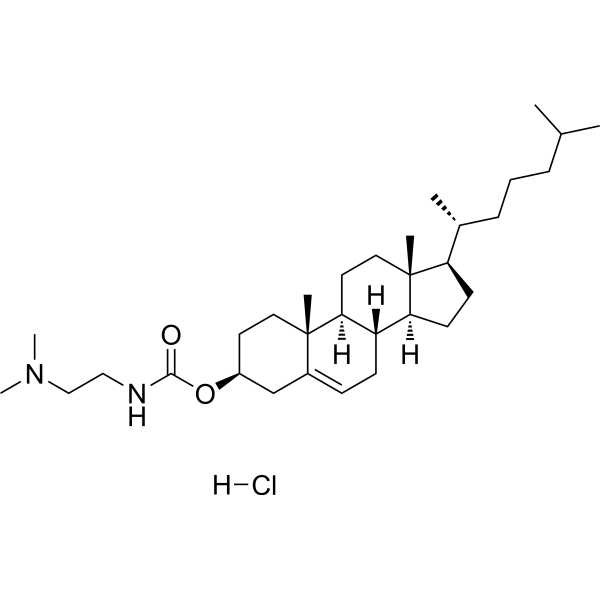
|
| DC60885 | 5alpha-Cholest-7-en-3beta-ol Featured |
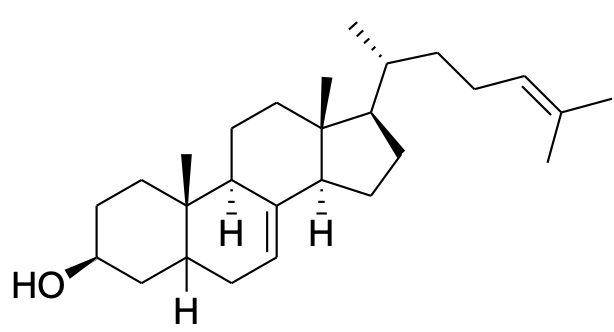
|
|
| DC99010 | Capstan lipid CICL-1(L829) Featured |
CICL1 (L829) is a novel ionizable cationic lipid specifically engineered for targeted lipid nanoparticles (tLNPs) that enables efficient in vivo delivery of mRNA payloads to CD8+ T cells. Designed to overcome limitations of conventional LNPs, CICL-1 (L-829)significantly reduces off-target delivery to the liver and exhibits rapid clearance compared to benchmark lipids like ALC-0315, while demonstrating enhanced biodegradability and tolerability in rodent and primate models. When incorporated into CD8-targeted tLNPs, CICL 1 (L829 enables preferential transfection of CD8+ T cells over other immune subsets, facilitating the generation of functional anti-CD19 or anti-CD20 CAR T cells directly *in vivo*. These tLNP-engineered CAR T cells mediate rapid, deep B-cell depletion in humanized mice and cynomolgus monkeys, with repopulating B cells exhibiting a naïve phenotype suggestive of immune reset. By eliminating the need for ex vivo manufacturing or lymphodepleting chemotherapy, the L829-tLNP platform represents a safer, scalable approach for accessible CAR T therapy in oncology and autoimmune diseases.
More description
|

|
| DC60886 | 5-alpha-cholest-7,24-dien-3beta-ol Featured |
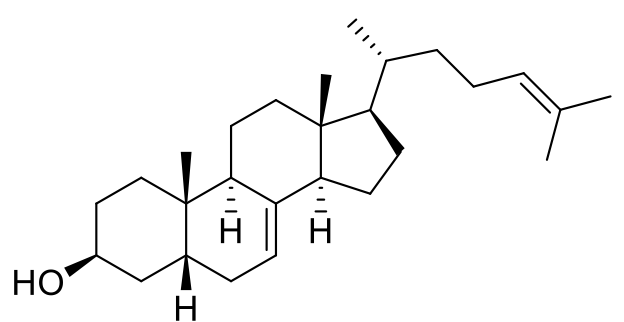
|
|
| DC45677 | 5α-Cholesta-7,24-dien-3β-ol Featured |
5α-Cholesta-7,24-dien-3β-ol, a sterol, can be found in hamster cauda epididymal mature spermatozoa.
More description
|
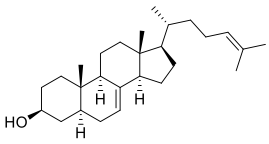
|
| DC32956 | Desmosterol Featured |
Desmosterol is an endogenous agonist of RORgamma; Intermediate in the synthesis of cholesterol.
More description
|
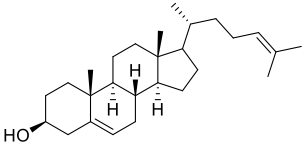
|
| DC12188 | Lathosterol Featured |
Lathosterol is a cholesterol-like molecule. Serum Lathosterol concentration is an indicator of whole-body cholesterol synthesis.
More description
|

|
| DC12199 | Cholestenone Featured |
Cholestenone is the intermediate oxidation product of cholesterol.
More description
|

|
| DC60884 | Sodium 5α-Cholesta-7,24-dien-3β-ol sulfate Featured |
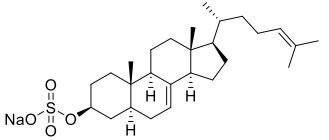
|
|
| DC60883 | desmosterol sulfate Featured |
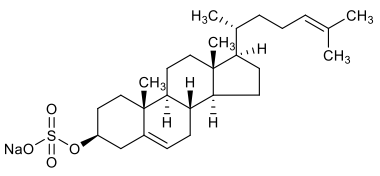
|
|
| DC60882 | sodium (20R)-cholest-7-en-3beta-yl sulfate Featured |
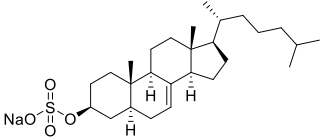
|
|
| DC11393 | CDM-NAG Featured |
CDM-NAG is a useful tool compound to deliver the siRNA.
More description
|
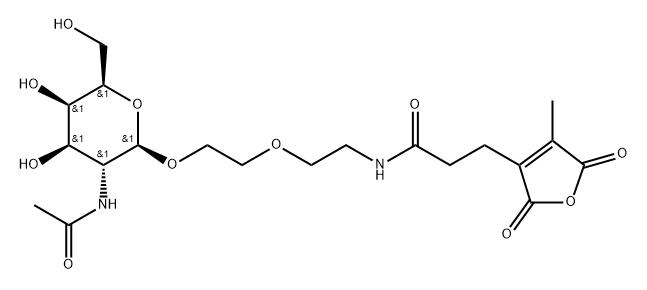
|
| DC65016 | AGPS-IN-2i Featured |
AGPS-IN-2i is a novel inhibitor of alkylglyceronephosphate synthase (agps), specifically impairing epithelial to mesenchymal transition (emt) by modulating e-cadherin, snail and mmp2 expression levels.
More description
|
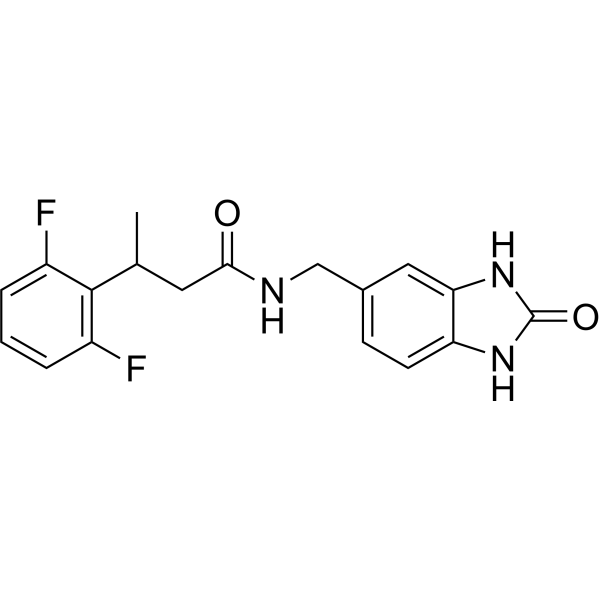
|
| DC74041 | JSD26 Featured |
JSD26 is a selective S-nitroso-coenzyme A reductase 2 (SCoR2; AKR1A1) inhibitor with Ki of 93 nM, 10-fold selectivity over AKR1B1.
More description
|
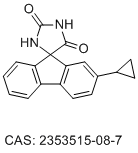
|
| DC52025 | SM-102 Featured |
SM-102 is an ionizable amino lipid that has been used in combination with other lipids in the formation of lipid nanoparticles.Administration of luciferase mRNA in SM-102-containing lipid nanoparticles induces hepatic luciferase expression in mice. Formulations containing SM-102 have been used in the development of lipid nanoparticles for delivery of mRNA-based vaccines.
More description
|

|
| DC76071 | VV261 Featured |
VV261 is an orally active Influenza Virus inhibitor. VV261 has demonstrated activity against severe febrile thrombocytopenia syndrome virus (SFTSV) and lymphocytic choriomeningitis virus (LCMV) (EC50: 0.89 and 0.15, respectively).
More description
|
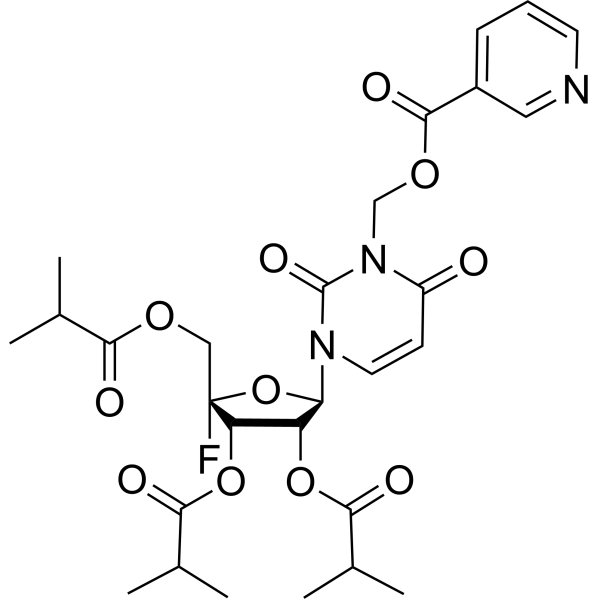
|
| DC73903 | Antabactin Featured |
Antabactin (ANT) is a highly potent pan-abscisic acid (ABA) receptor antagonist with EC50 of 760 nM and picomolar dissociation constant, disrupts signaling by preventing receptor-PP2C interactions.
More description
|
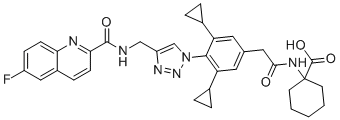
|
| DC67558 | AMG1541 Featured |
AMG-1541 is a degradable cyclic amino alcohol ionizable lipid optimized for mRNA vaccine delivery using lipid nanoparticles (LNPs). It features a multi-amine headgroup and hydrophobic tails, synthesized via epoxide-ester reactions with high purity (≥90%). Formulated typically with DOPE, cholesterol, and PEG-lipids, AMG 1541 LNPs have a diameter of ~85 nm, PDI of 0.107, and encapsulation efficiency of 67%, ensuring stability and efficient mRNA delivery. In vitro, it outperforms benchmarks like SM-102, showing enhanced transfection in cells such as C2C12 and PBMCs. In vivo, intramuscular administration in mice results in robust protein expression within 6 hours and induces potent immune responses, including high antibody titers and Th1-biased T-cell activation, with minimal inflammation. Mechanistically, its β-hydroxyl groups form hydrogen bonds with mRNA phosphate backbones, facilitating endosomal escape. AMG1541 degrades rapidly under enzymatic conditions, reducing long-term toxicity, and is effective for vaccines targeting pathogens like influenza and SARS-CoV-2, making it a promising candidate for clinical applications.
More description
|

|
| DC67623 | MOCHOL Featured |
MOCHOL is a novel, synthetically derived cholesterol analog designed as a lipid component in Lipid Nanoparticles (LNPs).
More description
|
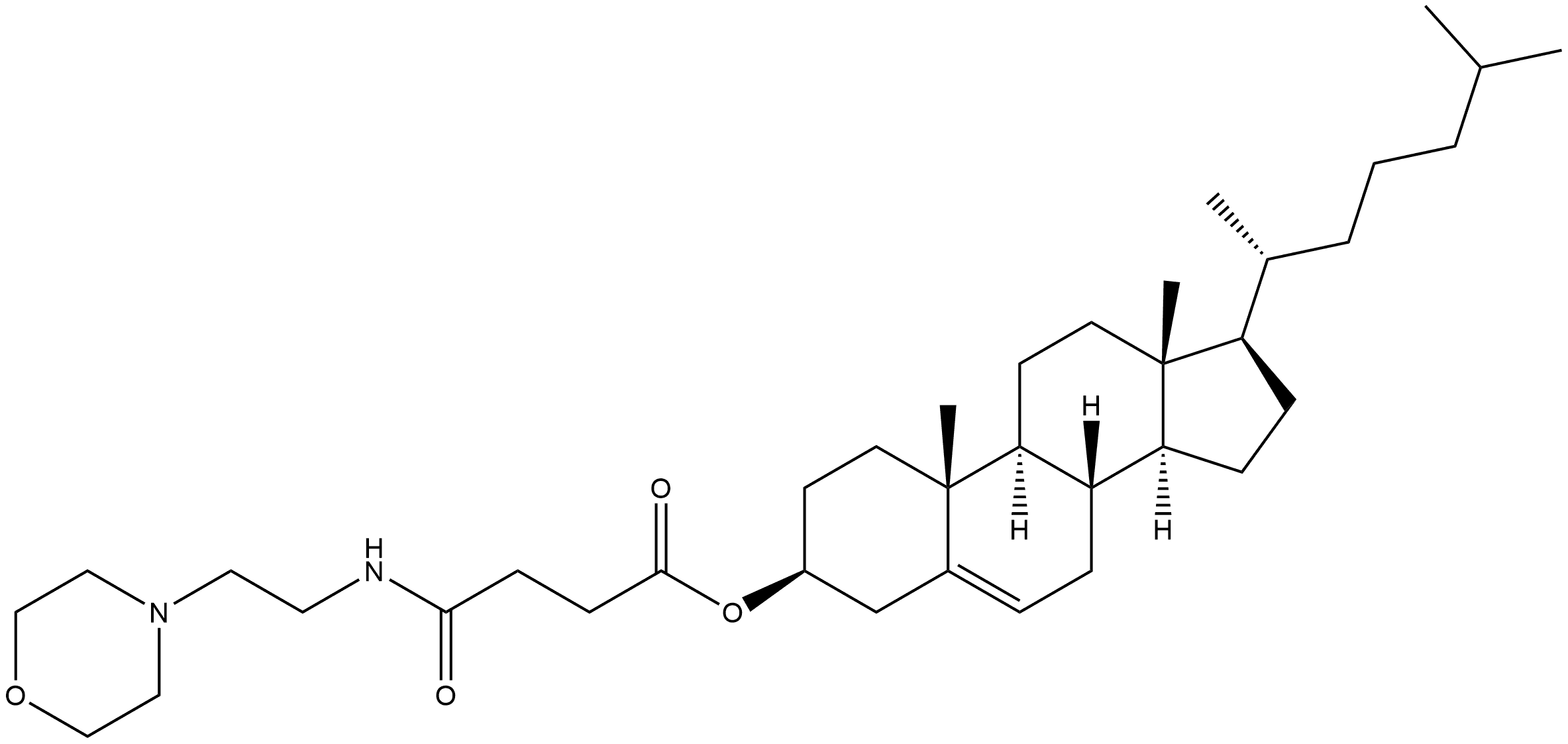
|
| DC1022 | ABT-737 Featured |
ABT-737 is a BH3 mimetic inhibitor of Bcl-xL, Bcl-2 and Bcl-w with EC50 of 78.7 nM, 30.3 nM and 197.8 nM, respectively.
More description
|
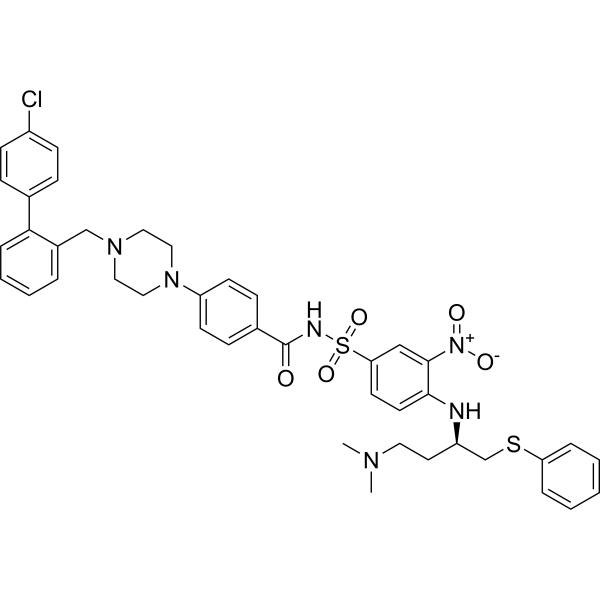
|
| DC74282 | HY041004 Featured |
HY041004 is the first small molecule inhibitor of deubiquitinase Josephin Domain-containing protein 2 (JOSD2) with IC50 of 0.26 uM for JOSD2 catalytic activity inhibition.
More description
|
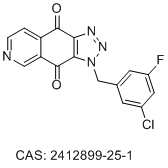
|
| DC38093 | Zelavespib (PU-H71) Featured |
Zelavespib (PU-H71) is a potent Hsp90 inhibitor, with an IC50 of 51 nM in MDA-MB-468 cells.
More description
|
.gif)
|
| DC60432 | DORI Featured |
DORI, N-(2-hydroxyethyl)-N,N-dimethyl-2,3-bis(oleoyloxy)propan-1-aminium bromide, is an ionizable cationic lipid with lower cytotoxicity and high transfection efficiency. Reagent grade, for research use only.
More description
|

|
| DC60880 | 2Ac3-C18 Featured |
2Ac3-C18 is a unique ionizable lipid with a distinct degradable core structure:featuring 2 acrylate units and 3 amine groups—linked to a C18 alkyl chain. Its LNPs (formulated with DOPE/cholesterol/DMG-PEG2000) exhibit spleen-specific mRNA delivery in vivo.
More description
|

|
| DC60879 | Lipid te AA3-Dlin Featured |
Lipid te AA3-Dlin is a novel ionizable lipid developed for mRNA-LNP vaccines.When formulated into LNPs, te AA3-Dlin demonstrates excellent stability in serum and protects encapsulated mRNA from degradation. A key feature is its unique protein corona profile, with high ApoE abundance, which is crucial for efficient in vivo targeting, particularly to the spleen. This enables potent dendritic cell transfection, leading to enhanced antigen presentation and robust cytotoxic T-cell responses for superior antitumor immunity.
More description
|
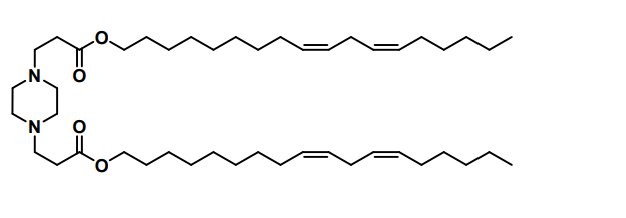
|
| DC86070 | 304-O13 Featured |
304O13 is a novel Biodegradable lipidoid for RNA delivery.
More description
|

|
| DC70677 | PAR2 antagonist C391 Featured |
PAR2 antagonist C391 (C391) is a selective PAR2 antagonist, potently inhibits peptidomimetic-induced PAR2 Ca2+ signalling with IC50 of 1.3 uM.C391 blocks both PAR2 Ca2+ and MAPK signalling pathways activated by peptidomimetics and/or proteinase activation.C391 effectively attenuated compound 48/80-induced thermal hyperalgesia in vivo.C391 blocked A. alternata-induced, PAR2-dependent Ca2+ and MAPK signalling in 16HBE14o- cells, as well as β-arrestin recruitment in HEK 293 cells.C391 effectively attenuated A. alternata-induced inflammation, mucus production, mucus cell hyperplasia and airway hyperresponsiveness in acute allergen-challenged murine models.
More description
|
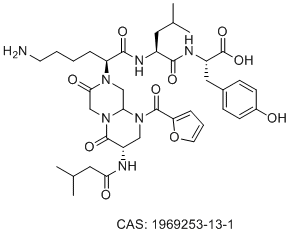
|
| DC60848 | Lipid 854 Featured |
Lipid 854 is an ionizable cationic lipid that has been used in the generation of lipid nanoparticles (LNPs) for the delivery of mRNA in vivo. Lipid 854 has been optimized based on Lipid 88.
More description
|
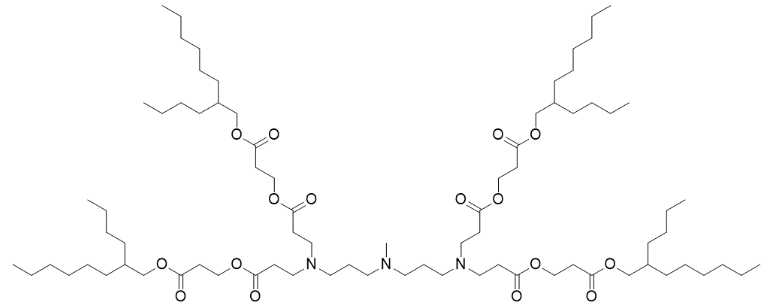
|
| DC60665 | JNJ-74856665 Featured |
JNJ-74856665 is an orally bioavailable, potent, and selective DHODH inhibitor with IC50 of 0.40 nM. JNJ-74856665 shows favorable physicochemical properties and has been selected for clinical development in patients with AML and myelodysplastic syndromes (MDS).
More description
|
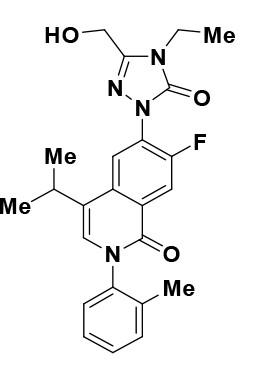
|
| DC67567 | ARV-T1 Featured |
ARV-T1 is a novel ionizable lipid featuring a cholesterol moiety incorporated in its tail, designed to enhance mRNA delivery efficiency. With a pKa of 6.73, it exhibits optimal pH-dependent ionization for endosomal escape and mRNA release. Structurally, ARV-T1 contains a tertiary amine head group and ester-linked lipid tails, enabling rapid in vivo metabolism and improved biocompatibility.Compared to SM-102 (used in Moderna's vaccine), LNPs formulated with ARV-T1 demonstrate superior physicochemical properties: smaller particle size (~80 nm vs. 90 nm), lower polydispersity index (0.09 vs. 0.10), and higher absolute zeta potential (-10 mV vs. -5 mV). These characteristics correlate with >90% mRNA encapsulation efficiency and enhanced stability, maintaining performance for 12 weeks at -20°C.In vitro, ARV-T1 LNPs showed 7-fold higher protein expression than SM-102 LNPs. In vivo, they prolonged luciferase expression (>72 hours vs. <48 hours for SM-102) and induced 10-fold higher neutralizing antibodies against SARS-CoV-2 spike protein at low doses. The cholesterol tail promotes endosomal membrane fusion, while ester linkages facilitate metabolic clearance, yielding an excellent safety profile in toxicity studies. This combination of efficacy and safety positions ARV-T1 as a promising platform for mRNA vaccines and therapeutics.
More description
|
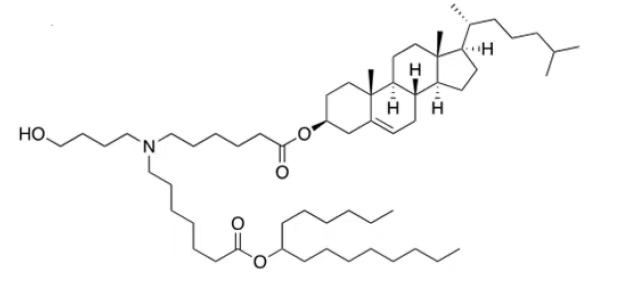
|